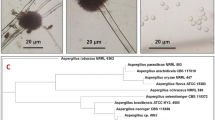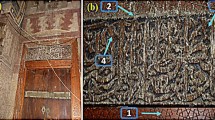Abstract
THE mycelial mats of Aspergillus niger and Penicillium chrysogenum possess apyrase activity. The organisms were grown as surface cultures on synthetic media, and at regular intervals the mat was analysed for apyrase activity and for ‘7-minutes phosphate’ in the acid-soluble fraction. During the first phase of metabolism, when sugar was being rapidly consumed, the enzymic activity and the content of labile phosphate were high. When autolysis set in there was a marked drop and sometimes even a complete disappearance of both apyrase activity and labile phosphate. Apyrase probably plays an important part in the metabolism of the mould.
This is a preview of subscription content, access via your institution
Access options
Subscribe to this journal
Receive 51 print issues and online access
$199.00 per year
only $3.90 per issue
Buy this article
- Purchase on SpringerLink
- Instant access to full article PDF
Prices may be subject to local taxes which are calculated during checkout
Similar content being viewed by others
References
Krishnan, P. S., Arch. Biochem., 20, 272 (1949).
Author information
Authors and Affiliations
Rights and permissions
About this article
Cite this article
KRISHNAN, P. Apyrases of Moulds. Nature 168, 171 (1951). https://doi.org/10.1038/168171a0
Issue date:
DOI: https://doi.org/10.1038/168171a0



